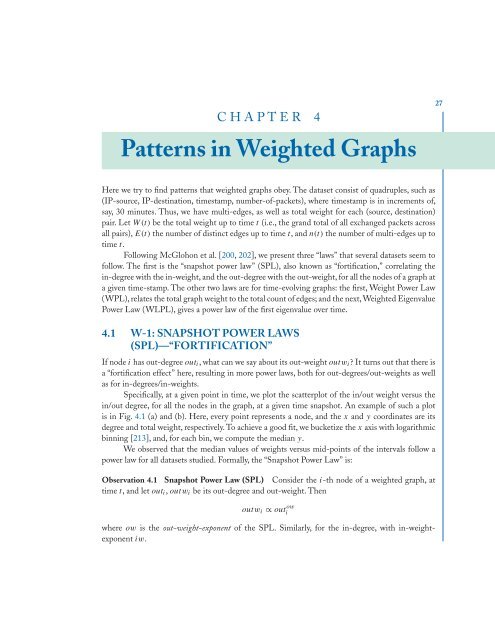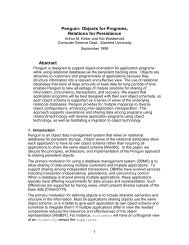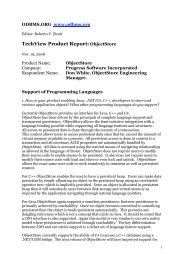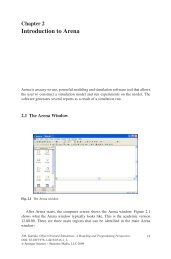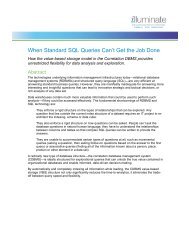Download Chapters 3-6 (.PDF) - ODBMS
Download Chapters 3-6 (.PDF) - ODBMS
Download Chapters 3-6 (.PDF) - ODBMS
You also want an ePaper? Increase the reach of your titles
YUMPU automatically turns print PDFs into web optimized ePapers that Google loves.
CHAPTER 4<br />
Patterns in Weighted Graphs<br />
Here we try to find patterns that weighted graphs obey. The dataset consist of quadruples, such as<br />
(IP-source, IP-destination, timestamp, number-of-packets), where timestamp is in increments of,<br />
say, 30 minutes. Thus, we have multi-edges, as well as total weight for each (source, destination)<br />
pair. Let W(t) be the total weight up to time t (i.e., the grand total of all exchanged packets across<br />
all pairs), E(t) the number of distinct edges up to time t, and n(t) the number of multi-edges up to<br />
time t.<br />
Following McGlohon et al. [200, 202], we present three “laws” that several datasets seem to<br />
follow. The first is the “snapshot power law” (SPL), also known as “fortification,” correlating the<br />
in-degree with the in-weight, and the out-degree with the out-weight, for all the nodes of a graph at<br />
a given time-stamp. The other two laws are for time-evolving graphs: the first, Weight Power Law<br />
(WPL), relates the total graph weight to the total count of edges; and the next, Weighted Eigenvalue<br />
Power Law (WLPL), gives a power law of the first eigenvalue over time.<br />
4.1 W-1: SNAPSHOT POWER LAWS<br />
(SPL)—“FORTIFICATION”<br />
If node i has out-degree outi, what can we say about its out-weight outwi? It turns out that there is<br />
a “fortification effect” here, resulting in more power laws, both for out-degrees/out-weights as well<br />
as for in-degrees/in-weights.<br />
Specifically, at a given point in time, we plot the scatterplot of the in/out weight versus the<br />
in/out degree, for all the nodes in the graph, at a given time snapshot. An example of such a plot<br />
is in Fig. 4.1 (a) and (b). Here, every point represents a node, and the x and y coordinates are its<br />
degree and total weight, respectively. To achieve a good fit, we bucketize the x axis with logarithmic<br />
binning [213], and, for each bin, we compute the median y.<br />
We observed that the median values of weights versus mid-points of the intervals follow a<br />
power law for all datasets studied. Formally, the “Snapshot Power Law” is:<br />
Observation 4.1 Snapshot Power Law (SPL) Consider the i-th node of a weighted graph, at<br />
time t, and let outi, outwi be its out-degree and out-weight. Then<br />
outwi ∝ out ow<br />
i<br />
where ow is the out-weight-exponent of the SPL. Similarly, for the in-degree, with in-weightexponent<br />
iw.<br />
27


